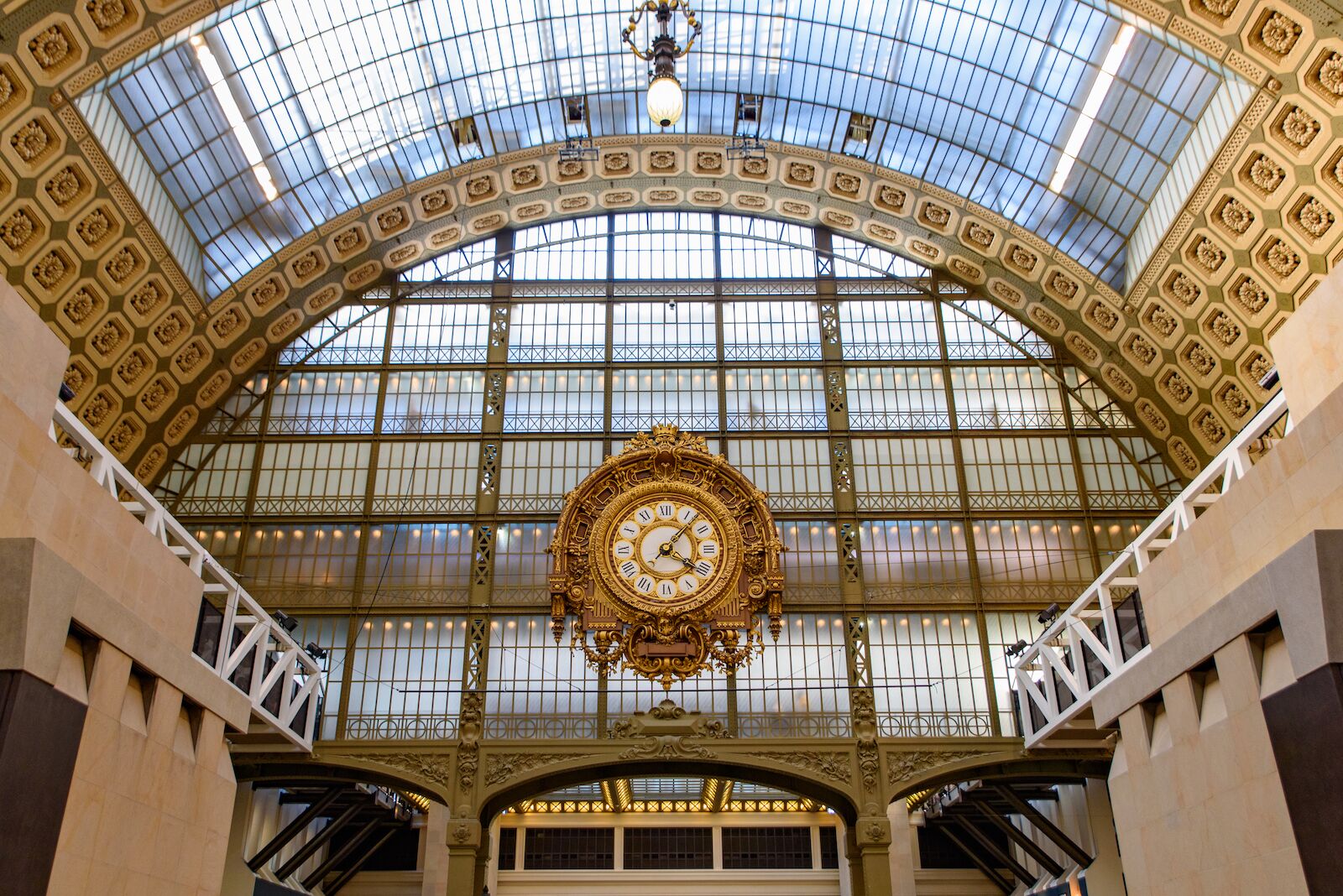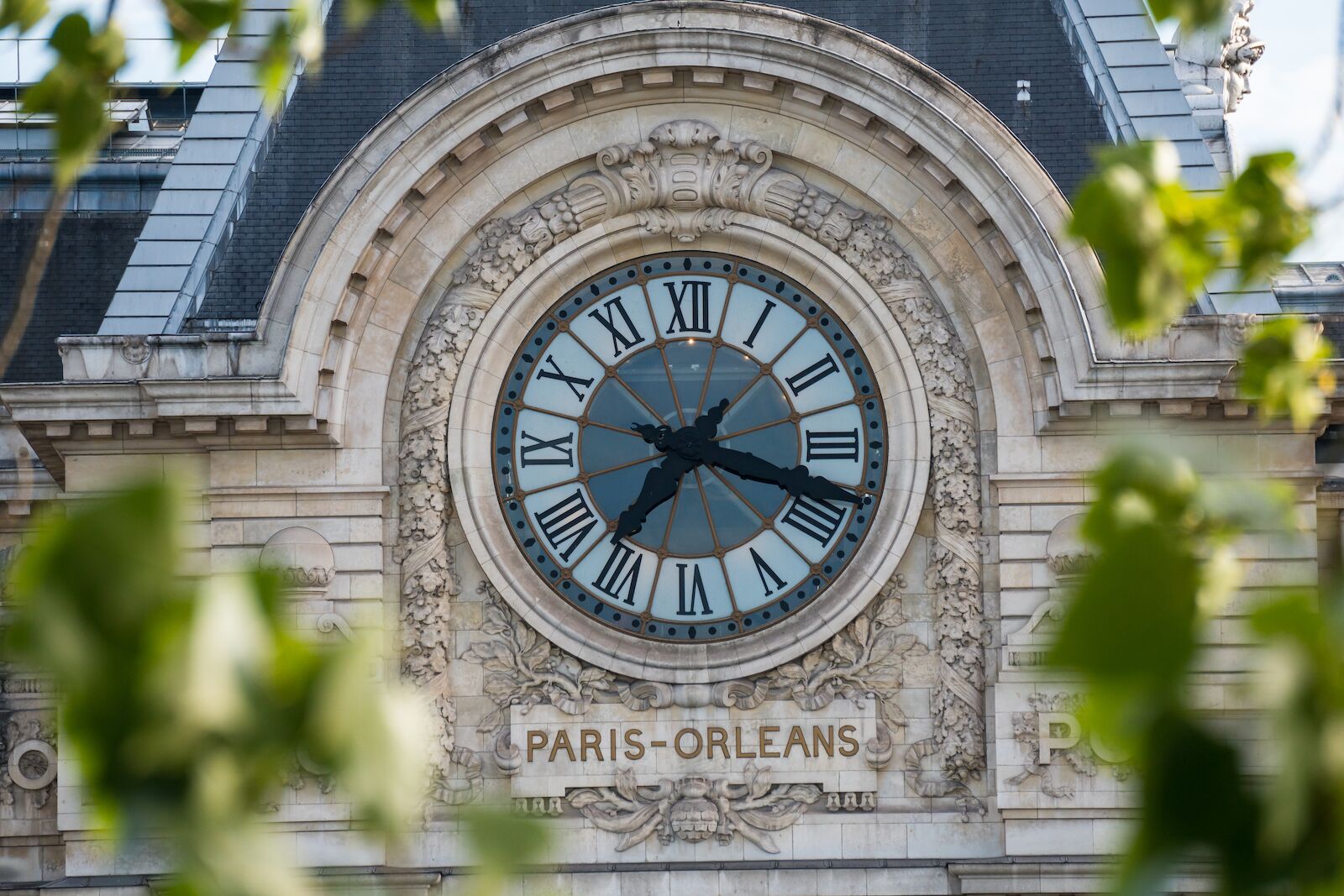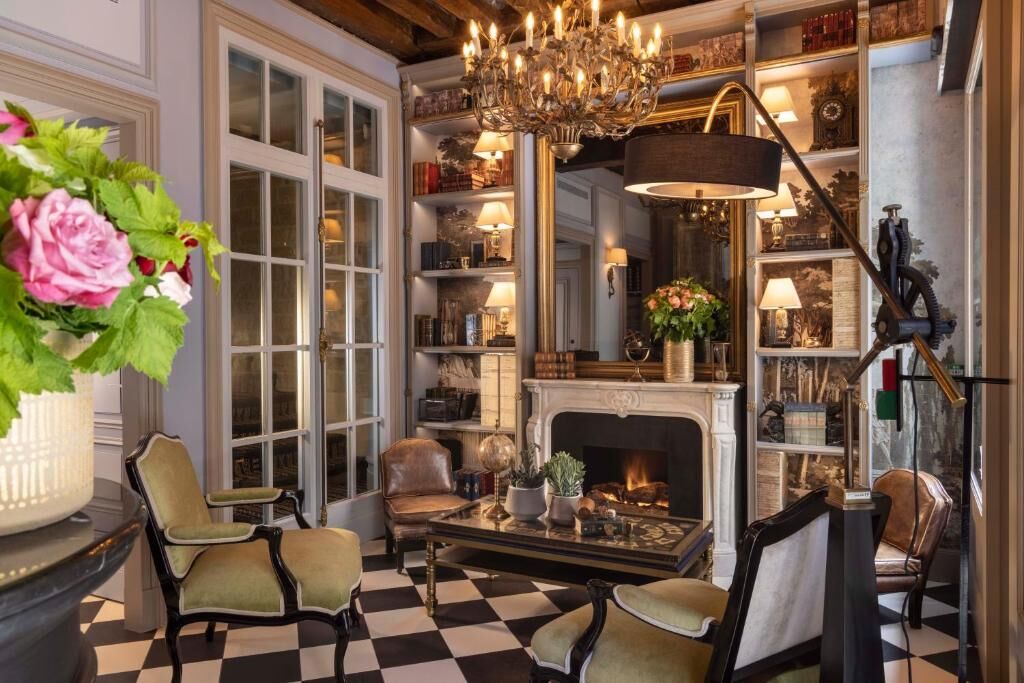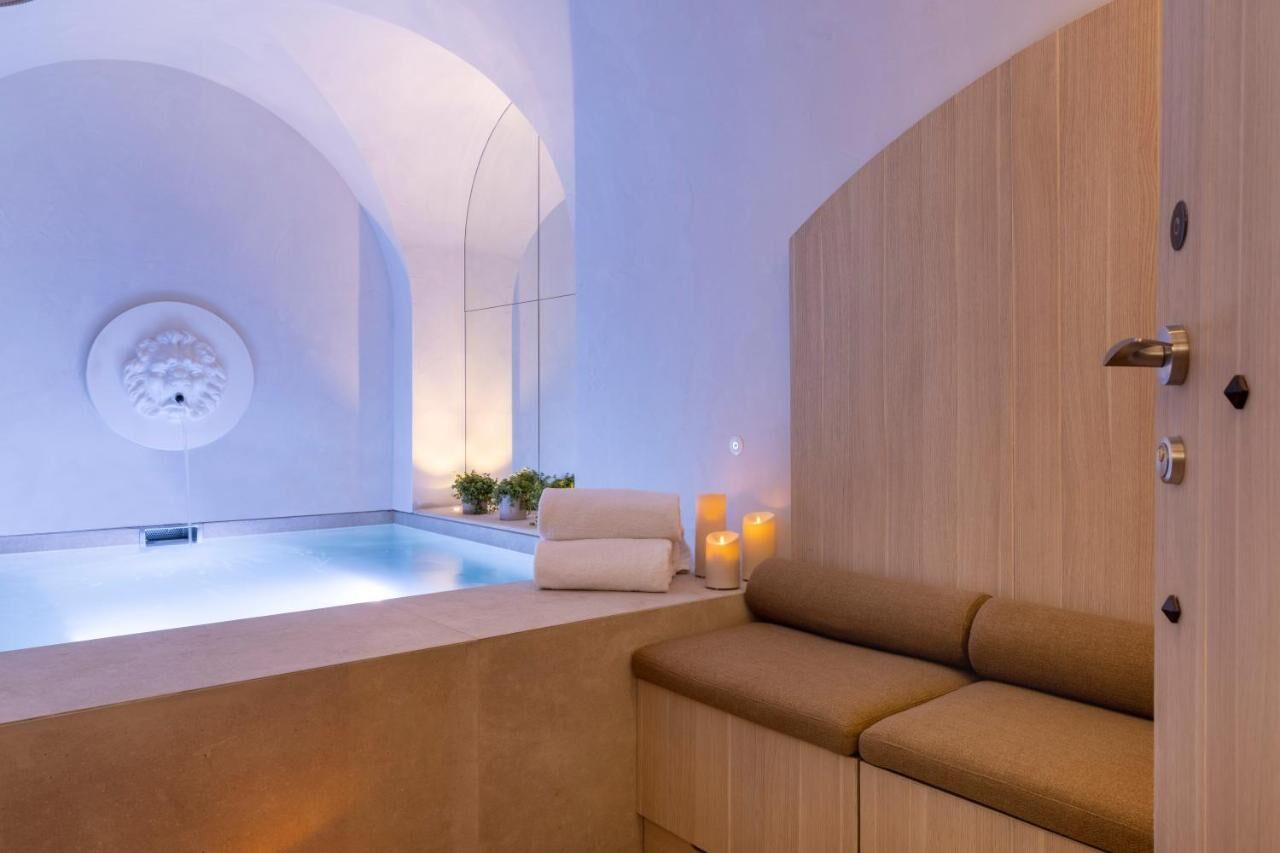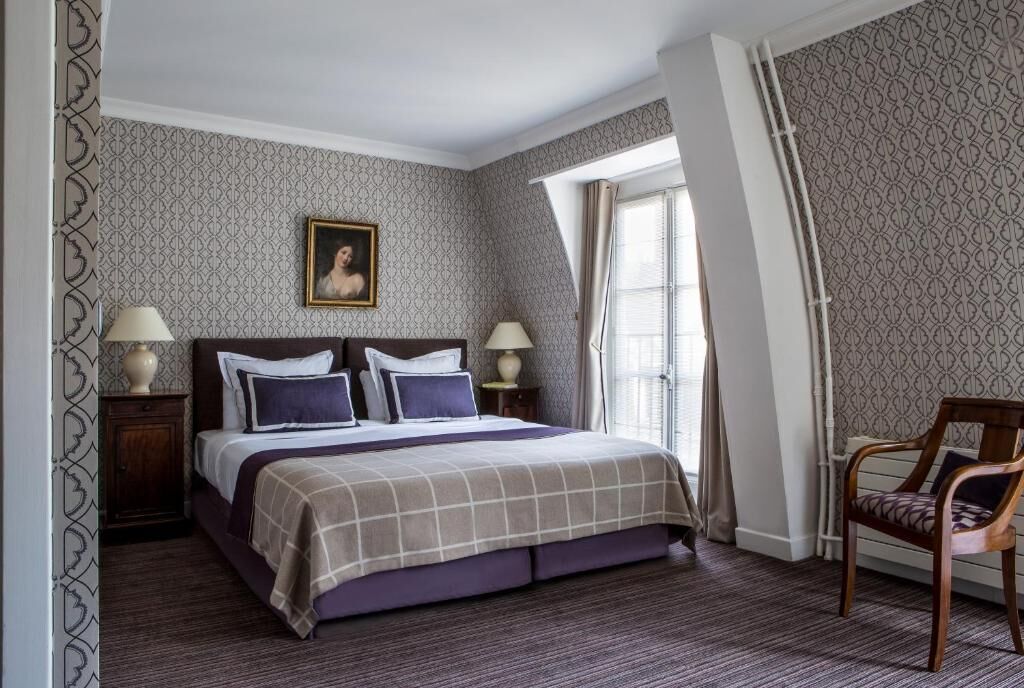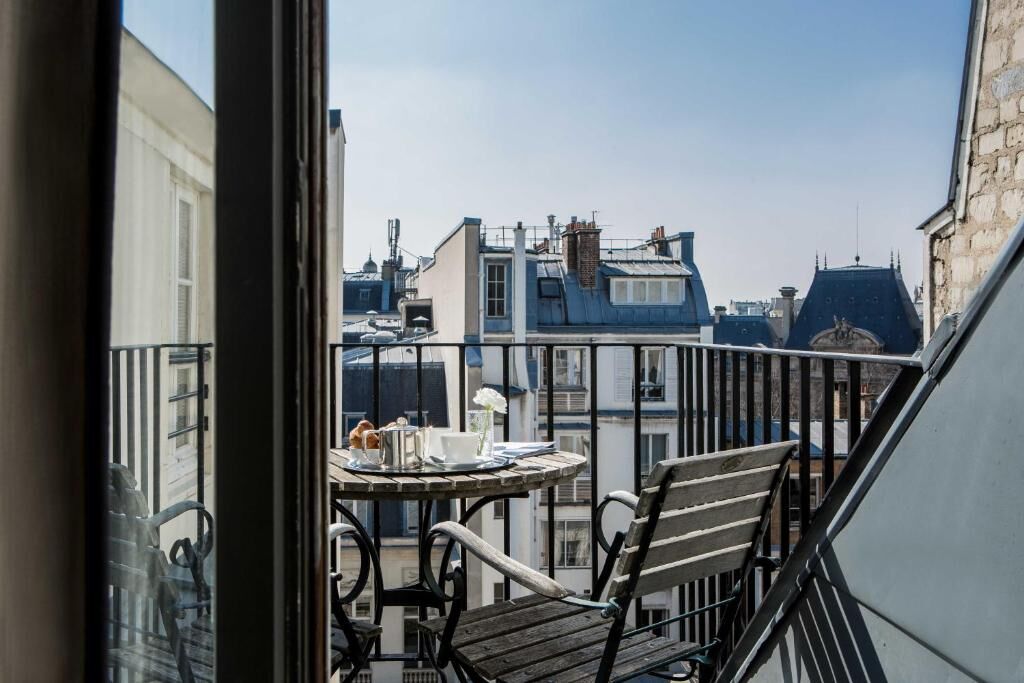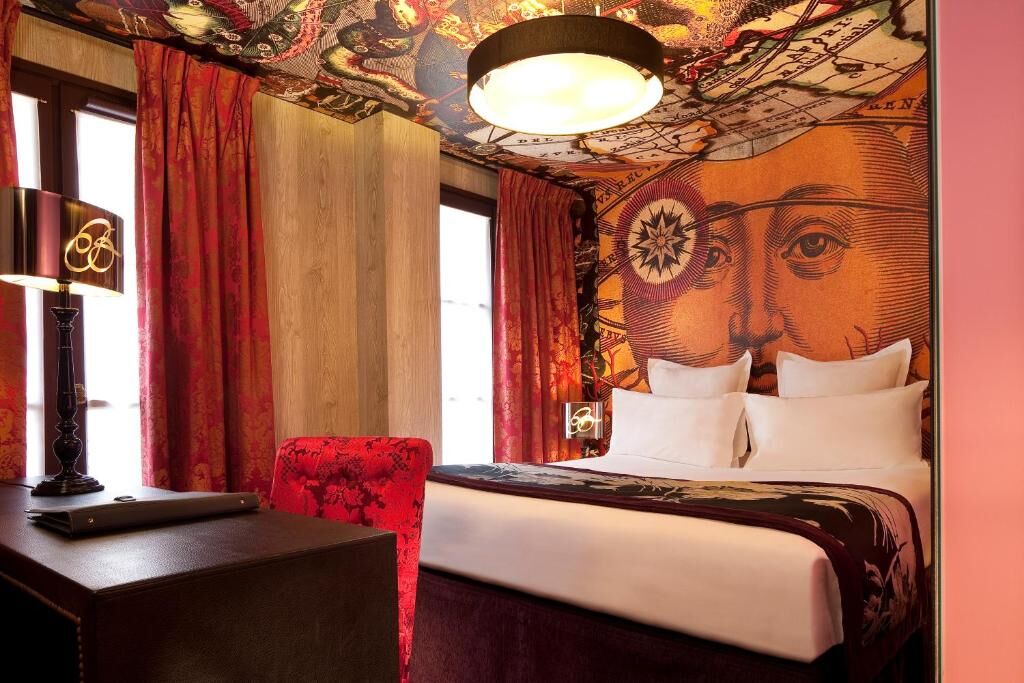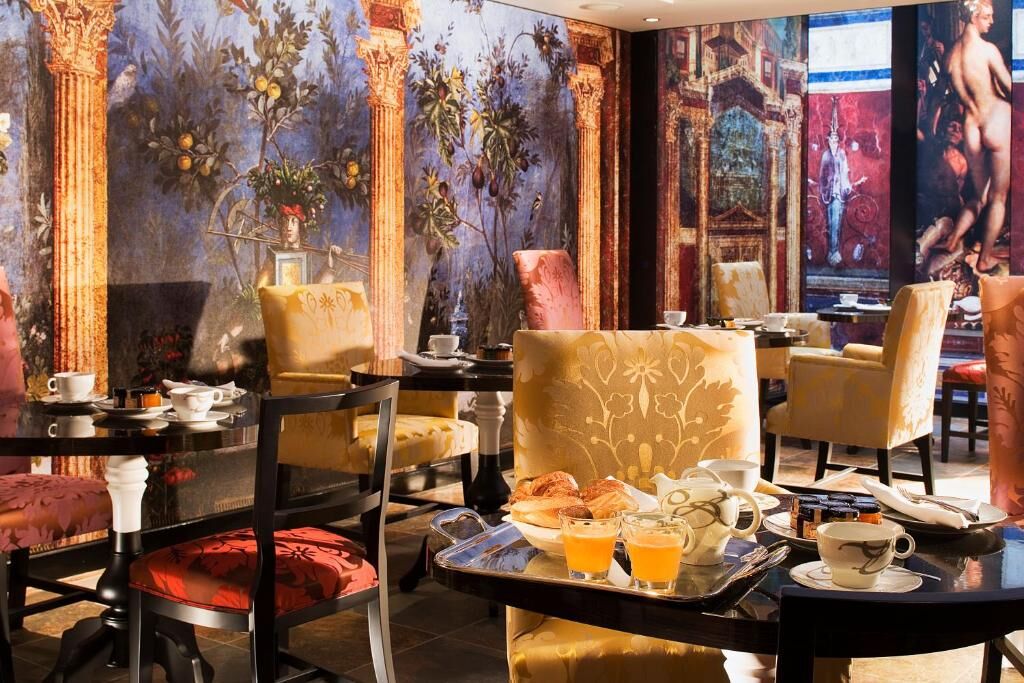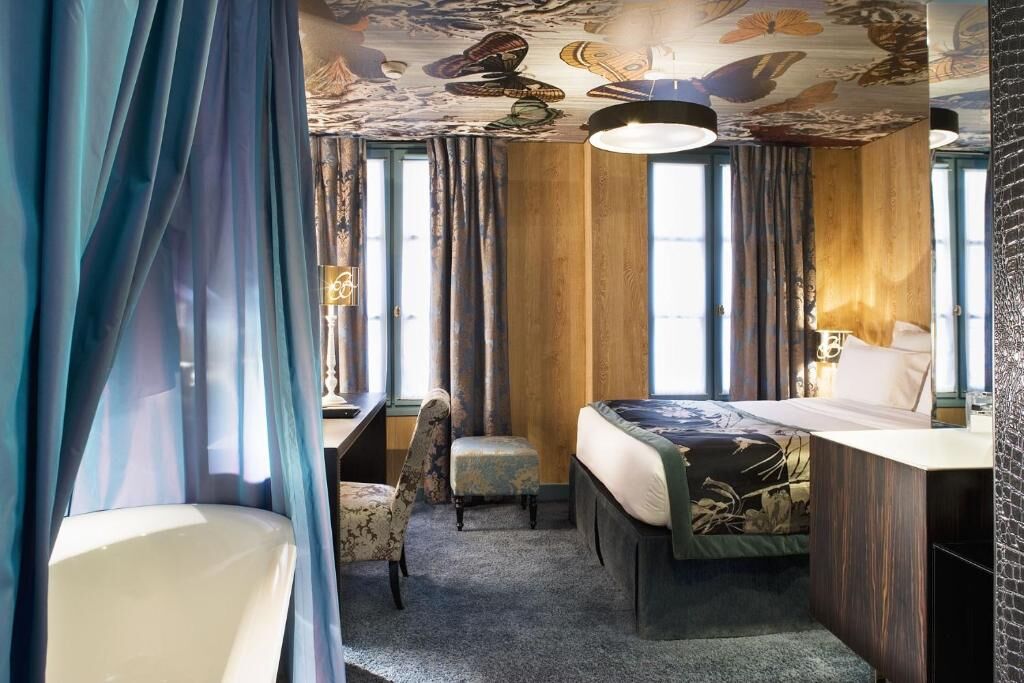There are too many excellent museums in Paris to visit them all, but if you have not been to the Musée d’Orsay, make sure to add it to the top of your must-see list. The second-most visited museum in Paris after the Louvre, the Musée d’Orsay is popular for a reason. Located in a former grand railway station on the left bank of the river Seine that is worth seeing on its own, the museum hosts a large collection of mostly French paintings, photographs, sculptures, and decorative objects, including famous works by Van Gogh, Monet, Degas and more.
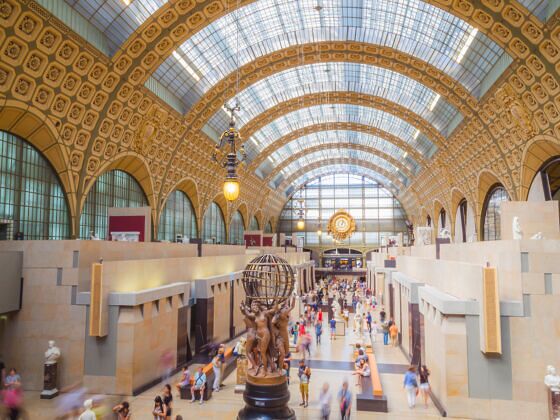

This 19th-Century Train Station Is the Second-Most Visited Museum in Paris
- Where is the Musée d’Orsay?
- How to get to the Orsay Museum
- History of the Musée d’Orsay
- What is the Musée d’Orsay known for?
- Which is better: The Louvre or the Musée d’Orsay?
- Musée d’Orsay in numbers
- Must-see pieces at the Musée d’Orsay
- When does the Orsay Museum open and close?
- How much does it cost to go to the Orsay Museum?
- Can you eat at the Orsay Museum?
- Where to stay in Paris to be near the Musée d’Orsay
Where is the Musée d’Orsay?
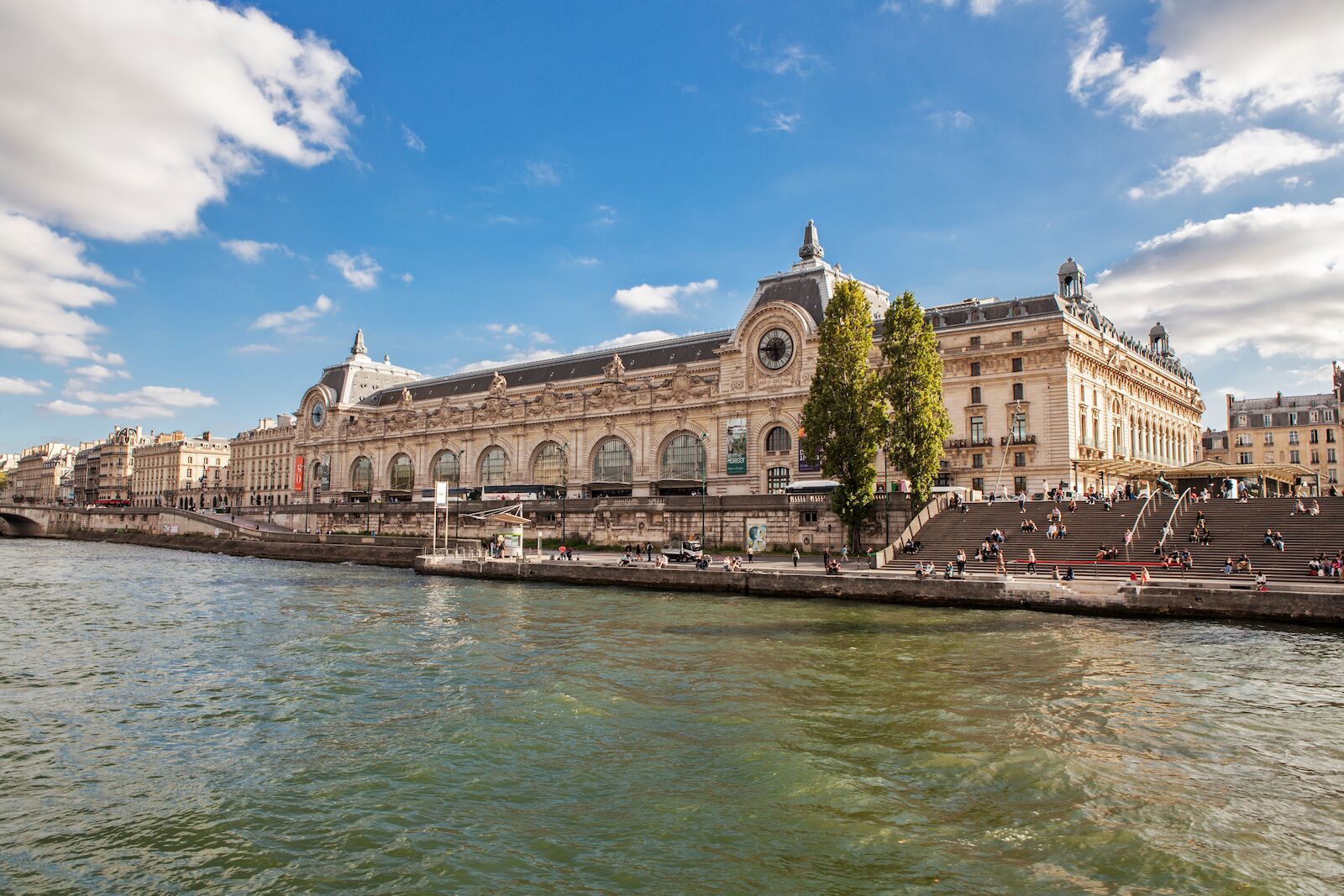
Photo: Radoslaw Maciejewski/Shutterstock
The Orsay Museum is located in Paris’s seventh arrondissement, on the left bank of the river Seine. Almost directly across the Seine from the Musée d’Orsay are the Tuileries Gardens and the Louvre. You can access both by using one of the several bridges that cross the river, including the nearby Léopold-Sédar-Senghor footbridge and Pont Royal.
How to get to the Orsay Museum
The easiest way to get to the Orsay Museum is by regional train (RER) or by metro.
The RER C takes you directly to the Musée d’Orsay station that is located right by the museum. The RER C is also the train that takes you to the Eiffel Tower and Versailles.
The nearby metro stations Soférino and Assemblée Nationale are also great options to get to the Orsay Museum as they are only a short walk away. Use the metro line 12 (colored in green on the metro map) to access them.
History of the Musée d’Orsay
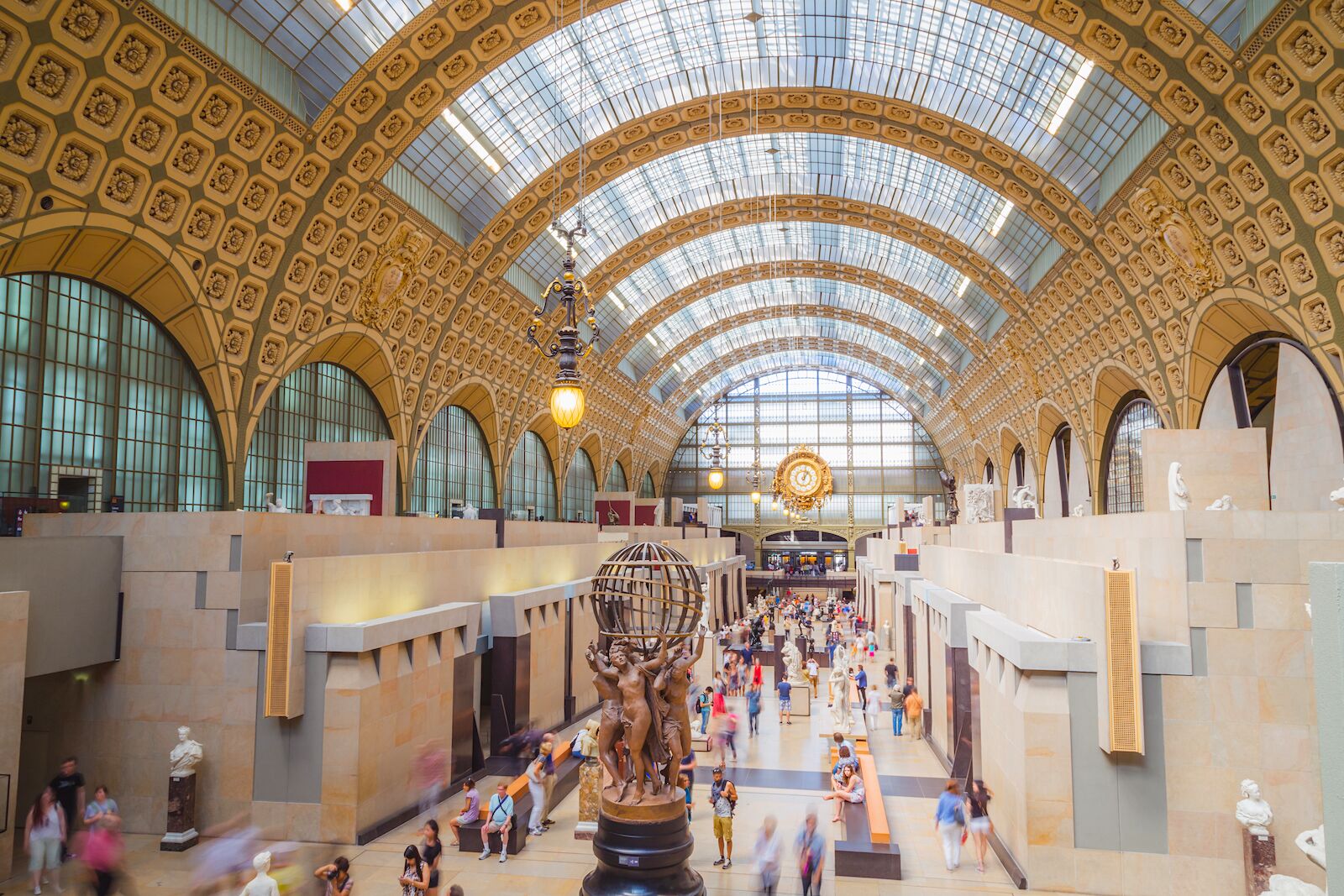
Photo: Stephen Bridger/Shutterstock
The stunning collection of the Musée d’Orsay is located in a former train station: la Gare d’Orsay. The train station was built between 1898 and 1900 in the Beaux-Arts style specifically for the 1900 Paris Exhibition, a world fair meant to celebrate achievements in art and technology from around the world. At the time, the station was ultramodern with elevators for passengers and luggage, and underground platforms. But a few decades later, the train station was so outdated that it had to close its doors. It’s only in 1986 that it reopened as the museum we known today.
What is the Musée d’Orsay known for?
The Musée d’Orsay is known throughout the world for a two principal reasons:
- The museum is located in a grand and elegant former train station, making for a stunning art venue.
- The Musée d’Orsay has the largest collection of impressionist and post-impressionist paintings in the world.
Which is better: The Louvre or the Musée d’Orsay?
The Louvre and the Musée d’Orsay are entirely different museums and choosing between one or the other will depend on your preference for art and your bandwidth.
While the Louvre’s collection is vast and spans centuries, civilizations, and countries, the collection of the Musée d’Orsay is much smaller and consists mostly of French art dating from 1848 to 1914. Being smaller and more specialized, the crowds at the Musée d’Orsay are much more manageable than at the Louvre; that said, the museum is very popular and can be busy.
Musée d’Orsay in numbers
- The Musée d’Orsay opened in 1986. Before that and until 1973, the building was a train station and a hotel.
- The Musée d’Orsay mostly displays French artwork created between 1848 and 1914.
- The Musée d’Orsay welcomes more than 3 million visitors every year. Between September 2022 and January 2023, the museum broke its own visitation record with an average of 6709 visitors per day.
- The museum’s collection consist of about 150,000 art pieces.
- There are three iconic clocks in the museum that visitors should take the time to check out: an ornate clock on the ground floor, and two large ones outside on the facade of the museum. For a quintessential Orsay experience, visitors should see one of the large outside clocks from behind by going to the fifth floor. The views of Paris through the glass face of the clock are not a sight you’ll want to miss.
Must-see pieces at the Musée d’Orsay

Photo: Takashi Images/Shutterstock

Photo: Takashi Images/Shutterstock
The museum is home to 150,000 artworks, all worthy of your time. That said, some pieces are more famous than others and visitors would be remiss to pass on them, including:
- La Nuit étoilée by Vincent Van Gogh
- Petite danseuse de quatorze ans by Edgar Degas
- Bal du moulin de la Galette by Auguste Renoir
- Coquelicots by Claude Money
- Le Déjeuner sur l’herbe by Edouard Manet
When does the Orsay Museum open and close?
The museum is open on Tuesday, Wednesday, Friday, Saturday, and Sunday from 9:30 AM to 6 PM, and Thursday from 9:30 AM to 9:45 PM. The museum is closed on May 1, December 25, and every Monday.
How much does it cost to go to the Orsay Museum?
It is cheaper to purchase your ticket upon arrival than online, but it’s quicker to book online than to wait in line. The choice if yours. Admission is $17.30 (16 €) for adults (18 and over) online instead of $15 (14 €) at the door. Between 6 PM and 9:45 PM on Thursday, visitors pay $13 (12 €) online or $11 (10 €) at the door. Discounts may apply; please check the website. Temporary exhibitions might carry a separate charge.
Can you eat at the Orsay Museum?
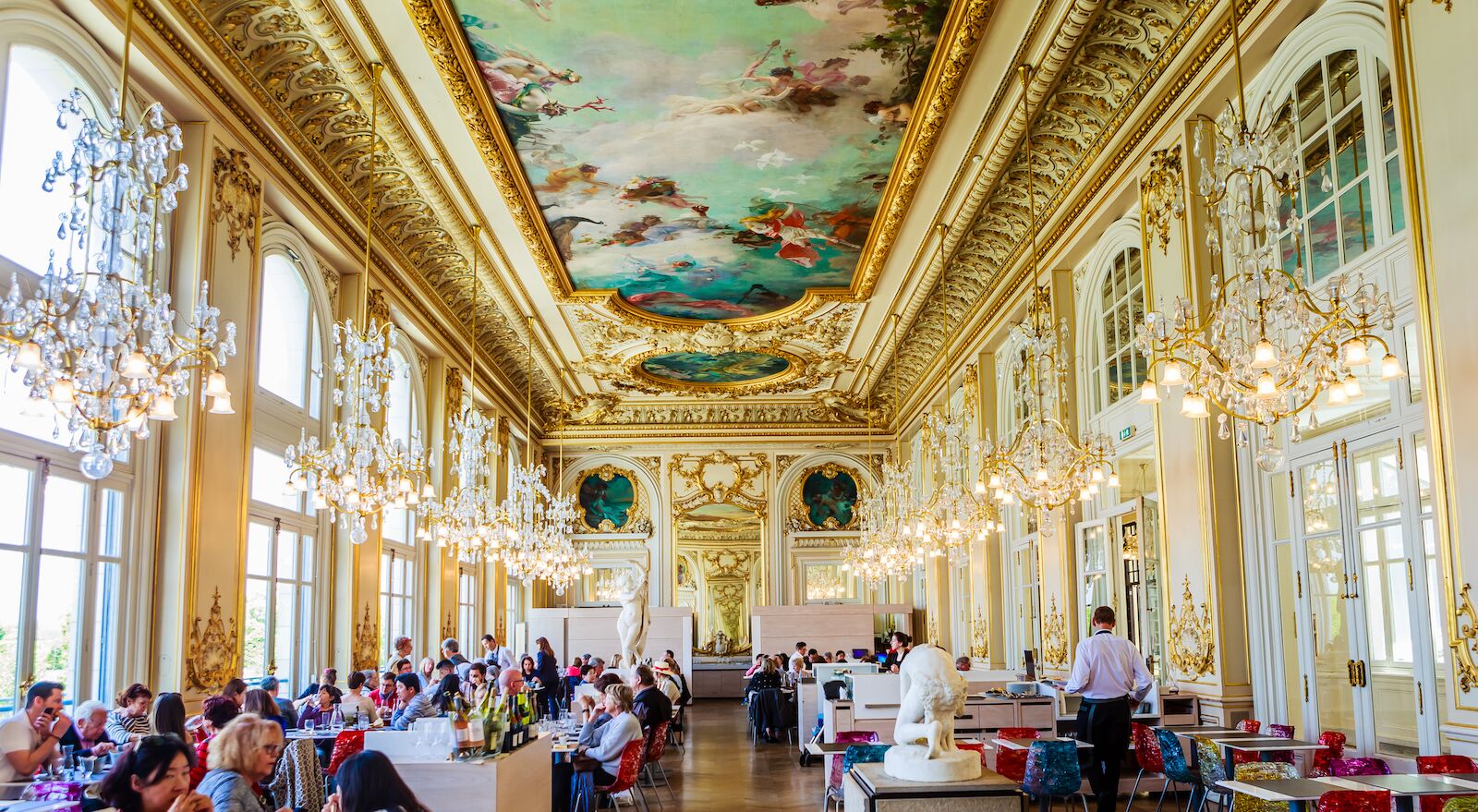
Photo: nikolpetr/Shutterstock
There are three places to eat at the Orsay Museum:
- In front of the entrance, in the forecourt of the museum, is Le Kioske du Parvis, a food stand that serves a vegan burger, potato chips, soft drinks, and ice creams.
- The Café Campana, on the fifth floor of the museum, offers a simple but delicious menu of salads, pasta, quiches, desserts, hot drinks, soft drinks, and wine. Café Campana is a great place for a break from the exhibits and allows visitors to sit down in front of one of the iconic clocks (the back of one of the large outside clocks).
- The Restaurant is a gourmet option in the most elegant room in the museum. Under painted ceilings and glittering chandeliers, the chef serves French seasonal culinary specialties.
Where to stay in Paris to be near the Musée d’Orsay
We hope you love the spaces and stays we recommend in Paris! Just so you know, Matador may collect a small commission from the links on this page if you decide to book a stay.
Hôtel Vinci Due & Spa
Only a seven-minute walk on the Rue de Lille from the Musée d’Orsay, the Hôtel Vinci Due & Spa is a four-star property that will rejoice those who want to immerse themselves into the traditional Parisian art scene. The impeccable decor is curated to look like a museum and make guests travel back in time, with large replicas of artworks in the rooms, old-fashioned rotary telephones, elegant headboards, and unique light fixtures. The hotel has a spa and a fitness center and provides an airport shuttle to the guests.
Hôtel d’Orsay — Esprit de France
As its name suggests, the Hôtel d’Orsay — Esprit de France is very close to the museum, only a two-minute walk. With framed paintings in every room, wooden beam on the ceilings, traditional high-quality wooden furniture, and elegant patterned textiles, this hotel, located in a 18th-century building, is one that exudes old Parisian charm. Some of the 42 rooms and suites have balconies with views on the roofs of Paris and the Musée d’Orsay — make sure you to request one. There is an airport shuttle available for guests and the breakfast at this hotel is reputed to be delicious.
Hôtel Le Bellechasse Saint-Germain
Just a one-minute walk to the museum, the Hôtel Le Bellechasse Saint-Germain offers unique rooms, each and every one of them entirely decorated by famous French deisgner Christian Lacroix. There is a terrace and a courtyard where guests can enjoy drinks from the on-site bar, Le Butterfly. A four-star property, the hotel provides an airport shuttle to its guests and offers a scrumptious breakfast.
